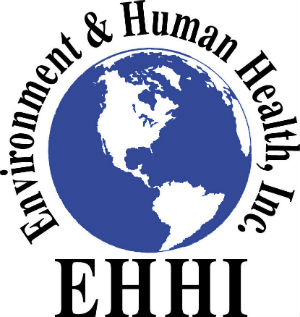Flame Retardants: Press Release
Environment and Human Health, Inc.'s 2013 research report closely examines the health risks that flame-retardants pose to the general population and recommends sweeping policy changes to protect the public. Recent toxicological studies demonstrate that flame-retardants pose the greatest risk to the normal growth and development of fetuses, infants and children. Flame-retardants are now ubiquitous in our environment. 
The report closely examines the health risks that flame-retardants pose to the general population and recommends sweeping policy changes to protect the public. The report examines the history of flame-retardants and demonstrates the enormous scope of the problem, noting that flame-retardants can now be found in the bodies of polar bears and whales, showing how far they have spread.
John Wargo, Ph.D., first author of the report and the Tweedy-Ordway Professor of Environmental Health and Political Science at Yale University, said, "Synthetic flame-retardants can now be found in the tissues of most people in the United States. Many flame-retardants are persistent and bioaccumulate in our bodies. Flame-retardants are not required to undergo health and environmental testing, and they are not required to be labeled on the products that contain them. Because exposures to flame-retardants carry health risks, they should only be used when the risk of fire outweighs the risk from flame-retardant exposures. When risk from fire is high, such as in airplanes, then the use of flame-retardants is warranted; when the risk from fire is low, flame-retardants should not be used."
The history of flame-retardant use in the United States is a story of substituting one dangerous flame-retardant for another. The country lived through decades when asbestos was used as a fire-retardant. Then when asbestos was proven too dangerous to be used, the country moved over to PCBs, and five decades later, when PCBs were deemed too dangerous for use, the country moved on to chlorinated and brominated flame-retardants.
In the 1970s, a flame-retardant called "Tris" was added to children's sleepwear. Tris was later found not only to be carcinogenic but also capable of being absorbed through the skin. Tris was finally banned in children's sleepwear in 1977.
Unbelievably, however, Tris is still used in many other infant products, such as crib mattresses, changing tables, nap mats, and infant car seats. "Tris was, and remains, carcinogenic," said Dr. D. Barry Boyd, oncologist at Greenwich Hospital and Affiliate Member of the Yale Cancer Center. There is ample evidence concerning the health risks from Tris to conclude that it should be removed from all infant products."
"Flame-retardants are not labeled in products, and this fact makes it hard for parents to protect their children from flame-retardant exposures," said Dr. Andrea Asnes, associate professor of pediatrics at the Yale School of Medicine. "Manufacturers should start labeling their products so that consumers can understand when flame-retardants have been added."
Recent toxicological studies demonstrate that flame-retardants pose the greatest risk to the normal growth and development of fetuses, infants and children.
"Many flame-retardants are endocrine-disrupting compounds that can affect a number of hormonal systems, including thyroid function," explained Dr. Hugh Taylor, chair of the Department of Obstetrics, Gynecology and Reproductive Sciences at the Yale School of Medicine. "Many flame-retardants are capable of crossing the placenta and therefore pose a health risk to fetuses and the ensuing child.”
"It has become clear that flame-retardants are proving to be a health risk to both the human population and the environment,” said Nancy Alderman, president of Environment and Human health, Inc. “It is time for flame-retardants to be removed from all low fire-risk situations and products. As well, a certification program should be established where manufacturers certify the absence of flame-retardants, just as organic food programs certify the absence of pesticides.”
Environment and Human Health, Inc. (EHHI) is a non-profit organization composed of physicians, public health professionals and policy experts, dedicated to protecting human health from environmental harms. EHHI does not receive any funds from businesses or corporations.
